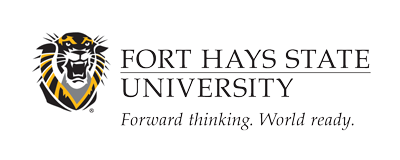Cheat growing in pastures robs potential performance from your cattle all summer. The same goes for cedar trees. If you don’t burn off cedars, cheat, and other cool-season grasses, it’s going to prevent areas of your pastures from growing the warm-season grasses that your cows are going to spend more time grazing on. If you don’t have good nutrition throughout the summer and into the winter, it’s going to damage the reproductive rate of your cattle as well; thus, burning pastures clean is a must. But it would be best if you had a plan.
Burn rotations are always a good thing to have in effect. Having a plan keeps everybody on the same page, saving time. You do not want to burn all your pastures every year but having a three-to-four-year rotation plan is always a good year. Each range is different, though, and you may find that some pastures do not need to be burnt as often as others.
The biggest thing that stops people from burning pastures is the risk of being the guy who started the county wildfire. Don’t be that guy; burns can be safe and successful if you carry the burn out safely and effectively while reducing the overall risk of wildfires caused by natural and artificial events. I.e., lightning strikes, cigarette butts out the window of a car.
Volunteer firefighters are more than willing to help control your burn, but a few simple tasks can prevent the fire from getting away from you.
The first thing when carrying out a burn is to prepare the land to be burned. Ensure burn guards are in place. A proper burn guard should be two to ten times the height of the vegetation; this means if the grass is about a foot and a half tall, you should probably have a fifteen-foot burn guard in place. It’s also a good idea to have multiple burn guards in place throughout the direction of the burn. These can just be swathed to lower the available fuel for the fire while not putting it out. Also, this will help to slow the fire and prevent it from getting out of control.
Secondly, you need teams. You need one guy in charge and then two separate teams to carry out different tasks. The first team is the burn team, and they light the fire. The second team is the control team; they control the fire. The burn team must not light more fire than the control team can handle.
The third thing is to understand the wind. You do not want to burn in a windy environment, this is common sense, but some people get in a hurry, and common sense gets thrown out the window. But it also is a critical factor in figuring out where the smoke is going to drift.
Let’s say you plan to burn an eighty-acre tract of land that’s got a road on the north side of it, and you’ve got a decent wind blowing out of the south. The wind isn’t enough to keep you from burning, but it is enough to push a decent amount of smoke across the road. It’s a good idea to put up signs on that road that say smoke ahead, prescribed burn ahead, slow down, etc. These signs will take the risk of the smoke over the road out of your hands and into the drivers of the road because you did warn them. Smoke can also cause problems around towns and airports; the public doesn’t always enjoy getting smoked out.
So now it’s time to start the burn. The first thing you need to do is get your burn permit.
Secondly is to backburn at the end of the path for the fire; this ensures you will get the fire stopped. Next, you start the burn. Light the fire using a drip torch on the upwind side of the pasture. Do not light more fire than the control team can control. The control team should focus on putting fires in the burn guards out and any other places that you do not want to. It is essential that you keep a good eye on all ditches and even outside the burn guard to ensure that no part of the fire gets away from you.
Once the fire has reached the end of the burn path and has gone out, you need to check and be sure that there aren’t any trees, fence posts, or anything else that takes a while to burn still on fire. Things like trees and fence posts can smolder for days, start a fire later that day, or even a few days after the burn. And once you’re with that, you have just completed a successful burn.
Nate James, a 2016 Smokey Valley High School graduate, is a senior majoring in animal science at Fort Hays State University. He is the son of Andy and Jonie James, Marquette.



